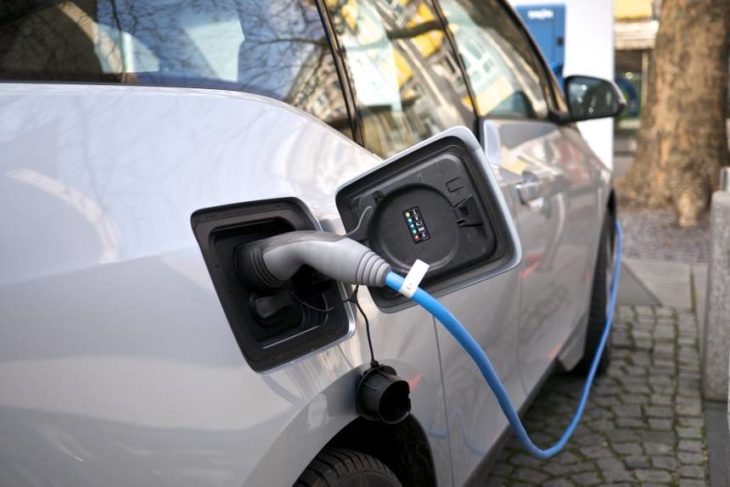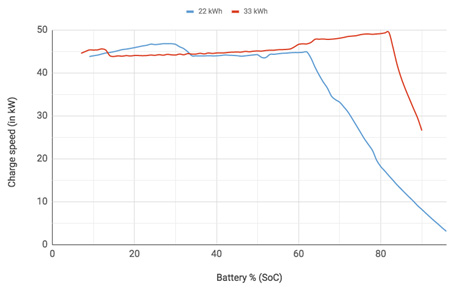Electric cars have a lot going for them. Many governments have subsidies for consumers, they’re cheaper to fuel, they have reduced emissions, the maintenance is cheaper and so on.
However, they also have a bunch of disadvantages. They’re more expensive to buy, lack recharging infrastructure and, as we’re going to discuss today, they take significantly longer to refuel.
While you can fuel a petrol car from empty to full in under a minute, an electric car will take ten times that at a minimum!
In this article, I’m going to explore past, present and future charging times to see if electric cars will ever be able to compete with petrol and diesel alternatives.
A Short History
In 1834, Professor Sibrandus Stratingh invented the world’s first electric vehicle. (I’m not counting Ányos Jedlik’s 1828 car since it operated on a short, electrified track and that’s cheating.)
Admittedly, Stratingh’s car was small and, yes, it used non-rechargeable primary cells that had to be replaced every time they went flat but it was an electric car nonetheless.
The next step towards proper electric vehicles — rechargeable batteries — would take a little longer to enter the scene, finally arriving in 1859 when French physicist Gaston Planté invented the lead–acid battery.
The first production electric car with rechargeable batteries arrived in 1884 from a young English engineer called Tomas Parker.
These first electric cars were nothing like the Tesla Roadsters and BMWs i3s of today. In fact, they looked more like horse-drawn carts than cars and had a top speed of 25mp/h.
Unfortunately, the emergence of petrol and diesel-powered engines stymied the development of electric technology and it would take another 150 years until electric cars broke into the mainstream again.
The Current Electric Market
The emergence of Tesla in 2004, combined with increasing environmental concerns, really kickstarted the electric revolution. Nowadays, there’s a raft of all-electric vehicles on the market and many more in the pipeline.
However, motorists still have to deal with the problem of recharging. A motorist can fill up a petrol-powered car in one or two minutes but it still takes substantially longer to recharge an electric car’s battery.
At the slowest end of the scale, are slow charging units, which are rated up to 3 kW. These primarily domestic chargers like the pro ev chargers should only be installed by professional ev charger installers and is designed to top up vehicles overnight. They typically take between 6 and 12 hours.
In the middle, you’ve got fast chargers, which are rated between 7 kW and 22kW. Most chargers you see on the street are fast chargers and can recharge most compatible cars in under two hours.
At the top end of the scale, you’ve got rapid chargers, which are rated between 43 kW and 120 kW. These chargers can recharge most compatible cars in under 40 minutes. All of these you can find on Electric Vehicle Supply Equipment.
Beyond these commercially available options, are some new R&D options. Swiss firm ABB, for example, has just unveiled their Terra High Power DC Fast Charger, which can top up an electric car in just eight minutes.
While AAB’s charger is impressive, it still lags behind the speed and practicality of petrol or diesel.
So, what does the future hold for electric charging times in the future?
My Future Charging Predictions
Unfortunately for impatient electric car enthusiasts, the science behind battery charging is a bit of a problem.
Charging a battery is a little like filling a conference hall. At the start, the conference hall is empty and it’s easy for people to find a seat. As it fills up, there are fewer available seats so it takes longer for each person to find somewhere to sit.
It’s the same sort of process in a battery. When a battery is flat, electrons find places to land very easily but when it fills up it takes longer and longer.
Here’s a graph from Fastned that illustrates the drop off in charging speed.
Charging with a BMW i3 (Source: Fastned)
The drop off in charging speed makes it practically impossible to fill a battery instantaneously.
So, how do we solve the problem of charging? Well, I think there’s good reason to believe we won’t need to. I think two pieces of technology — wireless charging and autonomous control — will alter our approach to charging so comprehensively that longer charge times won’t be an issue. In fact, structures like that electric vehicle infrastructure would also play a key role.
Let’s start with wireless charging.
Wireless charging isn’t exactly new, although it’s commercial application has been limited to low power devices like smartphones and input devices. But what if you could take that technology and install it into cars?
You’d end up with a car that you never had to plug in and automatically charged itself so long as it was parked in the correct place.
Well, that’s exactly what’s happening. Although we’re still in the early days, manufacturers are starting to experiment with wireless charging tech in cars and we’re seeing it applied in two different ways.
First, a more traditional application. You have a charging pad affixed to the floor and one fixed to the car. When you park over the pad, your car charges. These charging pads could be installed in residential garages by pros like this EV car charger in Woodstock or public car parks.
This application isn’t that inventive until it’s implemented alongside autonomous technology. Imagine you drive to work and hop out your car. Your car then locates the nearest charging pad and parks itself over it. When you finish work, your car comes to greet you at the front door with a fully charged battery and you haven’t done a thing.
However, this approach still doesn’t solve the problem of long-distance driving. Say your car has a range of 100 miles and you want to drive 200 miles. Do you sit at a service station for a couple of hours until your batteries have recharged?
That’s where the second application comes in.
Second, we have a more radical approach. Instead of installing charging pads away from the road, why not install them in the road? So instead of parking a car over a charging pad and leaving it to charge, you simply drive along the road with your car charging all the while.
Both options will require substantial research, development and infrastructure developments but I think it’s the most likely direction for the industry to take, especially considering the hard limits on charging times.
What do you think? Do you think charging technology will pursue a wireless approach or something entirely different? Let me know in the comments!
Article originally written by Tom Butcher. Tom Butcher is a freelance writer, covering a wide range of topics, including finance, business and motoring. At the moment, he is helping LeaseFetcher tell the world about car leasing.










